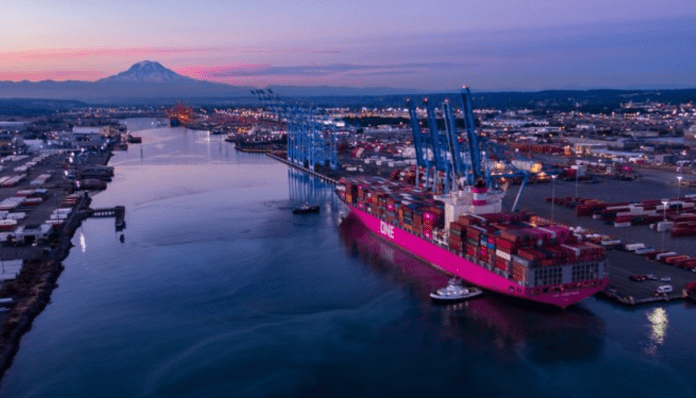As East Asia’s container shipping industry sails into uncharted waters, it faces a shifting tide of customer demand reshaping the very foundations of maritime trade. Amidst emerging trends and evolving preferences, stakeholders must adapt, innovate, and collaborate to stay ahead in this dynamic and competitive arena.
In the dynamic landscape of global trade, East Asia stands as a pivotal hub for container
shipping, facilitating the movement of goods across continents and powering the engines of
commerce. With its strategic location, robust infrastructure, and rapidly expanding
economies, the region’s container shipping industry plays a crucial role in connecting
markets, driving economic growth, and shaping the future of maritime trade.
East Asia’s ports are witnessing a surge in vessel sizes and container throughput,
necessitating investments in infrastructure and efficiency enhancements to accommodate
larger ships and handle growing cargo volumes.
Current container shipping landscape
Due to current political disruptions happening around the world, the shipping market is
expected to face challenges due to weak consumption, particularly in Europe. Despite these
challenges, the East Asia region is shifting away from labour-intensive commodity origins and focusing on high-quality commodities on the export market.
According to Louis Tang, managing director & regional head of East Asia Region, ONE:
“There is a strong belief in sustaining organic growth within the region. It is commonly
acknowledged that the shipping industry is grappling with an oversupply due to the influx of newly built containerships. Ocean Network Express (ONE) can combat this by enhancing our service quality, optimizing space allocation and strategically positioning ships within specific markets and loops. It is imperative that the region, which plays a significant role as a major exporter, address these issues.”
Changing landscape of customer demand
The geopolitical landscape is undergoing profound changes, with geopolitical tensions, trade disputes, and economic uncertainties reshaping global trade patterns and supply chain dynamics. As a result, customer demand in the container shipping industry is influenced by shifting trade routes, emerging markets, and geopolitical developments.
“Cargo patterns also are a growing concern and various factors such as geopolitical events,
consumer behaviour, trade policies, can, and will, influence customer demand,” he added.
Amidst emerging trends and evolving preferences, stakeholders must adapt, innovate, and
collaborate to stay ahead in this dynamic and competitive arena. ONE has observed an
increasing number of inquiries and demands from customers regarding efforts and activities in line with a green or sustainable strategy. Current and potential customers are interested in learning if companies are using vendors with green technology for ships, as well as the overall approach to the market.
Along with sustainable technologies, shippers are more attentive throughout the entire
process, unlike in the past, when receiving a consignment meant the end of their
involvement. Currently, shippers understand that competition is intensifying, and any issues during the voyage could affect their profitability. This shift in mindset emphasizes the need to re-evaluate the quality of service provided. Hence, it is key to ensure all customers are well-informed and regularly updated about their operations to enable a close working relationship to cater to meeting the dynamic demands required.
At ONE, internal system enhancements, particularly in the account management system,
have played a crucial role in improving communication, both internally and externally with
customers. ONE’s account management system, ONE Force was developed to implement a
more key account concept to meet customers’ demands is now well-established and
operating successfully.
The importance of sustainability in shipping
Sustainable practices within the industry are becoming increasingly urgent, with emissions
being one of the primary environmental concerns. As the world seeks to mitigate climate
change and transition to a low-carbon economy, reducing shipping emissions has become
imperative. Embracing sustainability in the container shipping industry means embracing
cleaner fuels, optimising vessel efficiency, and adopting innovative technologies such as
alternative propulsion systems and emission-reduction technologies.
Embracing sustainability can drive operational efficiency, reduce costs, and enhance
competitiveness. Investing in cleaner technologies and greener practices can yield long-term benefits both in terms of profitability and reputation. Additionally, sustainable practices can foster collaboration and partnerships across the industry, driving collective action toward common sustainability goals.
At ONE, the Green Strategy Team was established as part of their environmental
sustainability initiative. Currently, it is in its early stages and the plan is to kick off by actively collecting green initiatives, both internally and from regional partners and customers.
As East Asia’s container shipping industry stands at the threshold of digital transformation,
the importance of embracing digitalization has never been clearer. By harnessing digital
technologies to unlock efficiency, transparency, innovation, and sustainability, stakeholders
can navigate the complexities of global trade with confidence and resilience.
This article was written by Louis Tang, Managing Director & Regional Head, East Asia Region, Ocean Network Express (ONE)







